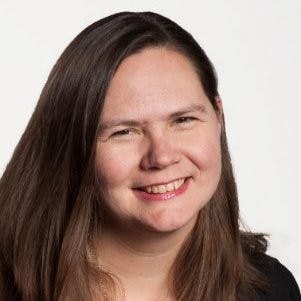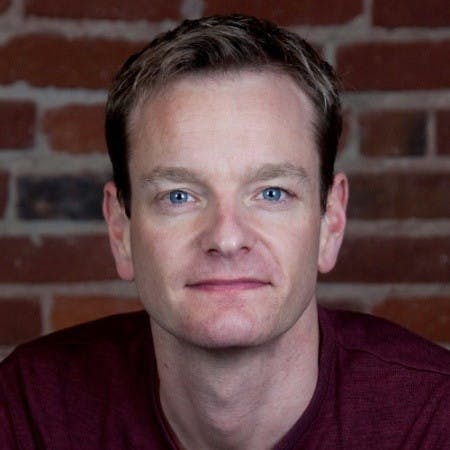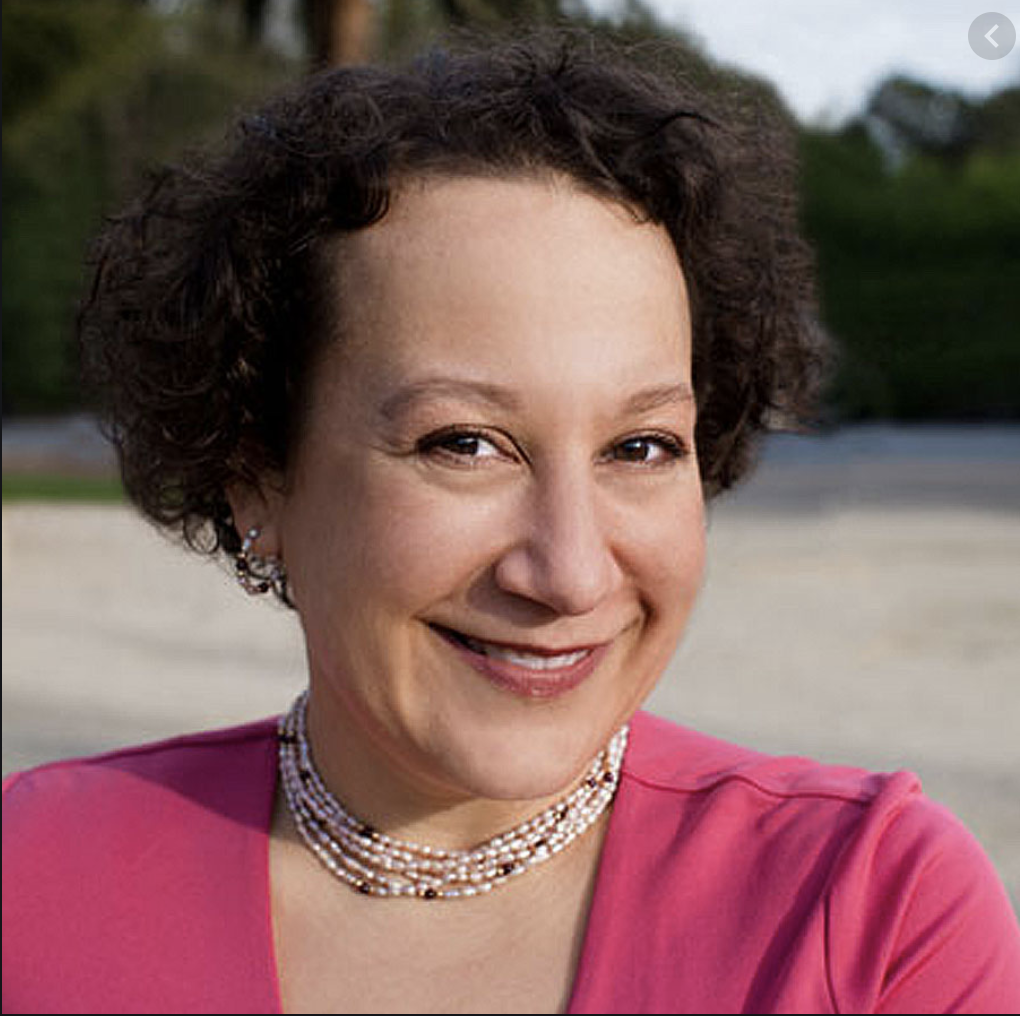Season 6 - Episode 8
Taking the Leap on Product
Todd Olson is the author of “The Product-Led Organization” & Pendo CEO/Founder. In today’s episode, Todd walks us through the importance of having passion for product, taking the leap, nurturing a good team culture, and what it means to be a product-led organization.

“What was the inspiration behind starting Pendo? ”
Some folks who’ve heard my story know that Pendo is born out of my prior experience. Prior to starting Pendo I was the VP of product at a company called Rally software, B2B SAS company. It’s a couple of things I saw on a couple, you know, kind of areas of pain that I experienced. The first was getting really good data for informing my product decisions. You know, I would get data once in a while, but I wouldn’t, it wouldn’t be complete. I was always sort of missing a few things. So I decided to hire data scientists. This has been like 2012, 2011 ish. I hired a data science and a product team, which is probably a lot of product teams that are data scientists during that timeframe.
And I hired him. I was like, okay, all my problems are going to be solved. And then like a month or two later, he came to me. He’s like, well, no, we can’t do this because of this reason, we don’t have data on this product. This product is too old. This one’s brand new. I have a bunch of reasons. I was like, well, that stinks. And then, and then he tells me, it’ll take, I don’t know, 30, 60, maybe 90 days of engineering work for the team working on it, like fixing all these problems, well that seems expensive. That was one pain point that was super frustrating. Another pain point, which, which I experienced there was as a product team, we wanted to ship faster and faster. Our engineering teams wanted to go faster. Like we were, we were kind of shifting more to this continuous-release, style development, and look as a product person.
And I’m a former engineer. Like I want to go fast. I love speed. That is one of my core mantras: ship it, you know, it’s ready to get it out there. You just can’t keep up with all that change always. So, what our users can, can,consume versus what we can ship if there’s an impedance mismatch. Right. So, and variably, I’d find myself at rally w talking to someone that they would like, I would talk to like some owner or some buyers, some customer, and they’d say, Hey, it’d be great if you did this. And I say, well, we shut that like two months ago. Didn’t you know? So when you’re shipping so fast that your customers have no idea that you shifted, like that’s a problem, a good problem to have, but still a problem.
So we started experimenting with some messages there, but very like one-off and kind of hard. And, I’ll never forget. We announced a feature. We called it New and we had no idea if anyone saw the announcement or not. So we left it in the product for six months. Now you could argue after like three months, it wasn’t new anymore, but without whether someone saw it, we just kind of were conservative. That was one of the use cases that stuck in my head when I started at Pendo is like, okay, if we have this usage data, so we know what people are doing, and we want to teach people, this combination allows us to personalize the experience. So a new batch can go away with someone uses it, and that is really powerful. Because one, you’re touching people and educating something that they may not know. Two, it’s disappearing when they do know it. So it’s not, you know, complicating the UI. I think that that would be an amazing use case. That was kind of how we got here. That was the thinking. It was all born out of pains that I experienced, it’s always a great place to start.
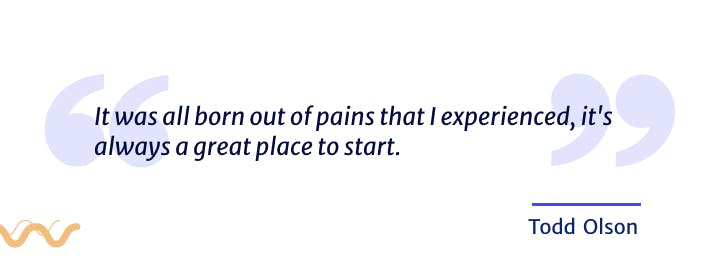
“I remember when I first heard of Pendo many years ago, you guys were one of the first tools or products designed for product managers, which is very meta since there weren’t really many tools for PMs. ”
I’ll tell you why, because when we started Pendo and right around that time, the, the narrative in the VC community and general business community was build for marketing. It’s the largest variable spend in the enterprise. Even when we started Pendo and I would go to prospective investors and I say, Hey, we’re building for product. They were like, no, you should do marketers. I hear there’s more money there. It’s like, yeah, I get it. But like, I really know this product role better. And I think there’s an opportunity to build a category around this, this role that has basically been not loved, you know, in terms of, in terms of a software company. Then, you know, the, the, the next thing that I’m pretty much everyone’s mouth was, was something to the effect of, well, there’s no budget in products.
And the number of times I’ve heard from people that there’s no budget in product. I was like, well, somehow we’re still here. And we’re growing in decent amounts. So like, people are finding a budget. Maybe it may not have existed, but it surely exists now. And I think that was one of those, leaps of faith, so to speak. Look, if we build something of value, people will find the money for it. And I always would reverse it back to like the VCs and investment committee was like, look, there’s no budget in product because there haven’t been things to buy. It’s a classic chicken in the egg problem. Well, now that there are things to buy, guess what budgets are going to start appearing, but you have to have something to buy. No, one’s going to just put a line at them, like tools to be invented sometime in the future.
Like that’s not going to occur. You have to have a little bit of leap of faith and know that if you’re going to build something of value, then you’ll get dollars for it. And I’ve always said like, product managers have budgets for humans. Like we hire product managers like that’s always existed. Why can’t they have a budget for tools? So I think that’s been kind of a fun part of the journey, to be honest. It’s kind of proving people wrong. I won’t, I won’t lie, that provides me just a little extra motivation day in, day out. So let me prove people wrong feels good.
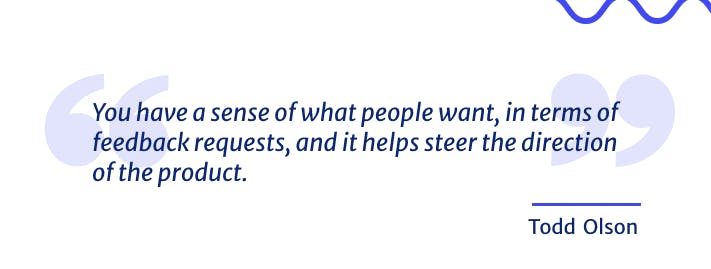
“What is Pendo today?”
We call it a broad platform and the most complete platform to drive product adoption. So we exist to help people adopt software for software better. It’s really composed of three, three pieces, one product analytics or product insights. I think what makes us unique in that market is that when you drop us into your application, we collected everything with no developer, instrumentation, or work required at all. And that was actually very novel when we first built that solution is still a big part of the reason why we went in. And again comes back to pain. I struggled to get developers to do it, so I wanted to invent a solution that didn’t require it to be really basic, but that’s still, today one of our core tenants. The second one is a messaging guidance platform, and that’s everything from guided tours to tooltips, and then it’s connected to the data. So you can, again, personalize that UI. And the last major piece is around customer feedback and road-mapping. It’s this whole idea that if you have a sense of what people want, in terms of feedback requests, and it helps steer the direction of the product.
The reality is we want general practice managers to need all three of those things. You may not need all of it from Pendo day one, but eventually, you’re going to have those problems, and look at, that’s kind of where we are today. I think there are obviously many future innovations, but those are the three main pillars of our software applications.
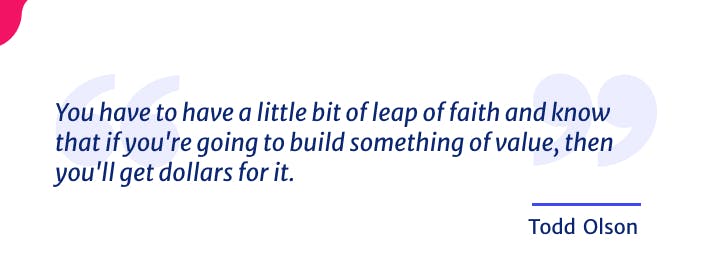
“What is the rationale behind taking more of a platform approach?”
We started a little broad and I’ll tell you why. You talk to like Product people, like focus, focus, focus and I kept saying, I am focused. So I was like, I don’t think I’ve ever not been focused. But I’m focused on solving a problem. That problem is driving more engagement in a software application. It just so happens. I think the best solution to that problem is brought. For example, I can focus on being the best product analytics vendor in the world, but the question is to what end, what are you trying to do with the data? What’s the why behind the data? The data in business serves a purpose.
The purpose is to have more engagement in this particular case, but to solve that problem. Well, you need more than just anything you need to do something with drive action. Day one is like I don’t want to ship a product that has one piece, we need to solve this problem and nail it. And it comes out like jobs-to-be-done frameworks. Like what are you hiring Pendo to do? I’m hiring due to increased engagement on myself or my application. That’s why you hire us. So I think that’s where the fundamental solution, or fundamental strategy day one is like going a little bit broader.
And look, we built that messaging platform like month two at Pendo. It wasn’t like I even went deep at all. We went abroad really fast and that was to set the tone for the rest of the company that we are unafraid to be a little bit broad.
When we’re a tiny company, it was hard, really hard. Like how do you invest in one versus the other? I mean, when you’re talking about some discussions like there were fun discussions. Now we’re big enough where we have over 20 scrums to use something like that. So now we can kind of work on everything. So we do have the benefit of just size and scale now. That’s been our bet. My bet has been that the ultimate winner in this category is going to have a broad platform. I still think I’m feeling good about that bet right now, Carlos. I’m not saying we’ve won. What I’m saying is I’m feeling good about the bet.
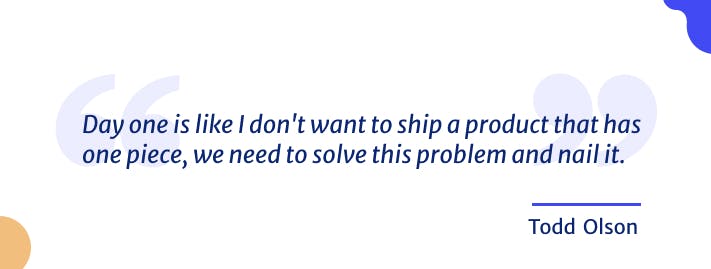
“How has your personal journey been like? How did you grow yourself to continue being the CEO for the company? ”
I started as a technologist, so I’m by training, a computer engineer, computer scientist, but I’ve always started my career in being connected to business. So I’ve always been a little building things, you know, I started working at age 14 for a bank in an analyst role where I was like talking to the business, understanding what they need to help run their business and helping build programs to meet those needs. And I’ve always enjoyed that marriage of business and technology. So I think that’s been a passion of me day one. The first thing that you have to do, if you’re trying to be a CEO or trying to grow is being intentional. Like, I’ll be honest, this is my third startup.
The second one I started, I thought I couldn’t be the CEO. I assumed that I was too technical or I needed some sales background or I didn’t have a broad enough set of skills. I don’t think it was like a lack of confidence. It was a lack of understanding what the CEO role was. I just saw other CEOs and they had different backgrounds than I did. And I said, well my background is like that. I shouldn’t do it. I’ll bring someone else in. And finally with Pendo because honestly my prior companies, startups didn’t work out quite the way I wanted them to. I was kind of insistent. Like, I feel like I need to give this a try. So the first thing is being intentional, like about what your role is, what you want it to be.Then building around that.
So, okay. If I want to be a CEO, but I’m also pretty technical, I probably need a really good CTO that can unburden me from all those things. So I don’t get pulled back into roles that are uncomfortable doing. And I think that’s one of the key things is in order to be a CEO, you need to be able to let go. In order to like to go, you have to have people working on your team that you’re confident enough just to kind of like let go. If you look at our founding team, I surrounded myself with people. I was comfortable that he could go. And that frees me up to our new things, build new skills to grow in new ways. So I think that’s probably the first thing.
With respect to how I’ve grown the most though. and this has been helpful because I’ve had different experiences at different companies. It’s really unlike the people side, the softer skills, building culture. I mean, I’ve always had passion, but defining core values and being an empathetic leader. Those are the skills I have to work the most on are the hardest for me naturally, like I can be generally pretty type A hard-charging individual. I need to be a different kind of leader to scale at this level and it, so I work on it. I read a lot, I talk to a lot of people. I have a professional coach, like all those things. I mean, these are the things that I do to be better at my craft, but it’s work. I mean, I’m not going to lie. It’s work.
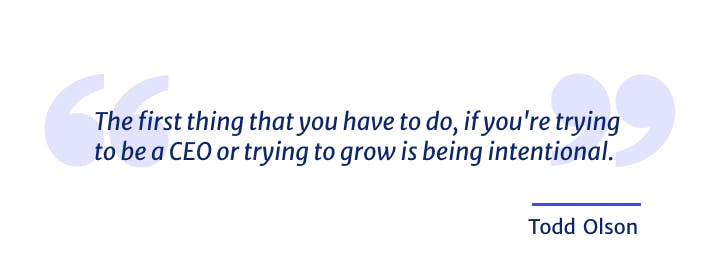
“A pattern that I continuously identify from speaking with different CEOs and product leaders. Is that they keep learning. No matter where you are today, there’s always something new to learn.”
People ask me how long I’m going to work or how long I’m going to do this. As long as I’m learning and having fun, I’m here for a long time. I love it. I learn something new every single day. If you’re scaling as you’re growing. I also joke too, like I’m the only person probably in this role that would probably never get hired for this role. Who would hire me? I’ve never seen the next three years in terms of being a CEO, right? So you would never hire me to do that job. Right. So I would never hire me. So I’m lucky I kind of get this kind of free pass almost to learn the job, but it also makes my job super fun and super engaging. As long as I can hire people under me, which do push me and challenge me and are respective experts within their fields, it frees me up to focus on vision and culture and mission and telling the story and honestly, things I love doing. It all works, but, yeah, learning passion, and curiosity are absolutely critical.
The CEO’s got three jobs. Attract the right people, and hire them, make sure you have the right team. The second one is, make sure of the mission, focus on heading in the right direction. Third thing, not run out of money, but I do those three things. I love recruiting. I still interview nearly every person in the company and it drives my recruiting team up a wall. You can imagine there are some days I’d probably do seven interviews. Honestly, it’s just exhausting some days. I mean, I love it. If I can help make sure we have the right people at Pendo, I get so much scale, not having to worry about whatever it is they’re working on, but that’s good for me. So I’d rather invest my energies in that and than other things. So yeah, very passionate about that.
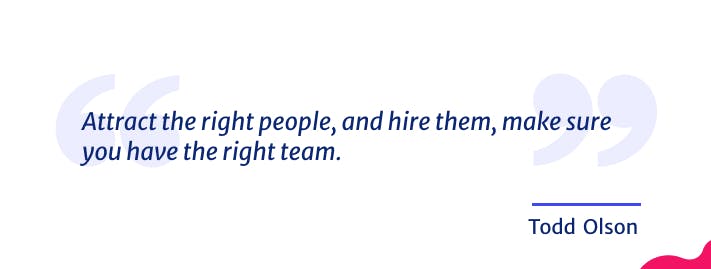
“What is your relationship with your product team? ”
I think it’s great. So, it’s actually fun. I am now the acting chief product officer, we’re going through a transition right now. I’ve been getting closer to the team and actually we have a product leadership summit the next couple of days I’m facilitating with them and I’m looking forward to rolling up my sleeves and getting back in with them. I’m very close to product. I’m still actively involved in setting the direction, but also focusing on the details, reviewing the outcomes. I’m a member of the product team and I think our product is a key part of how we win. So, I think it’s being a member of the team asking challenging questions, even running specs from time to time, over the weekend, I was really passionate about something and I was worried I wouldn’t be able to communicate it well. And I sat down and just wrote a spec. It’s like, this is what I think we should build.
I want to do research in some areas. I want to talk to some customers about sound, but like it’s general strong man. Let’s go validate this. This feels good to me. I’m not always that hands-on, but like I was just feeling it over the weekend and I decided to write a spec. It felt like a good thing to do.
I love design reviews. I mean, I’ll talk an hour about fonts, if you want to, I really care about them. Some fonts make a product feel engaging and some don’ts. These little details I’m incredibly passionate about. So yeah, I think it’s a great relationship, but I love being in the trenches with folks. It gets me excited
“We have conversations with a lot of PMs and aspiring PM’s and it’s like, I want to work at Google. That’s an option, but strive to understand who the CEO of the company you want to work for is and how much they value product.”
In general, you want to go to an organization where you’re going to be challenged, where you’re going to grow, learn, and that’s going to be great for your craft. I will never forget one of my key decisions when I started my first company, I was 20 years old. I was having a conversation with the executives about deciding, should I go, should I not go? I’ve been an entrepreneur. And I really want to join some other company. And I remember sitting across from, at lunch and This guy said, look, this is a real software company.
Like we’ve got great product market fit. We know we’re doing well-funded. You’re going to learn a lot. Like, this is a professionally run software company and you know, what it was. Come to learn, it was a bit of a craziness there. Well, at the end of the day, I learned a ton. I grew a lot, built great products, had great outcomes. Didn’t regret even a minute of that decision because it was just, it was a professional place. I pride ourselves on that, that type of culture. It’s a professional software company. This is what we do for a living. And I’ve been doing it since I was 20. We know how to do it. The people we hire have done it before. And I like that part of the culture here. That’s what you’re looking for. You want to be in software, come here. Like we know what we’re doing.
We are always hiring. We have, like, 70 open positions now. It is a little crazy. We hired 120 people this quarter. So I think we’re trying to hire another 120 ish this quarter. So, we’re almost doubling our head count this year, a massive growth year. It feels good though. It feels good. I’m enjoying a lot of the new faces.
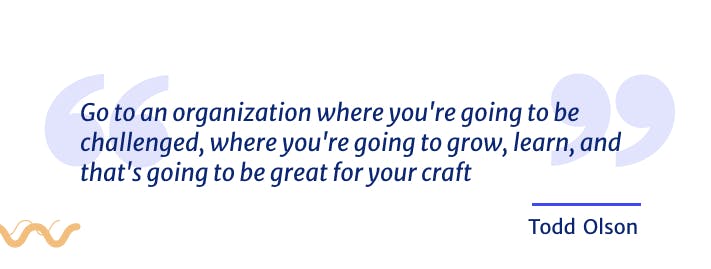
“I’m sure you have a lot of free time, so you decide to go and write a book. Is that right?”
I guess so. I mean, why not? I wouldn’t say I had a surplus of free time, but we got approached by a publisher and we were talking about it and I felt called to do it. Like, I don’t know what to say. I’ve approached earlier in my career, but I never really felt passionate about any given topic. And we started talking, I got really passionate, this notion of being product-led and what it means. And there weren’t a lot of books on it. And I thought that it was going to be a book, in terms of the story to be told, there are some great books around, the role of product manager. I want to make sure that whatever story I told was unique, and I feel like what we were able to put together in this book in terms of the stories, the focus I think is pretty unique. It’s a unique story to be told. That is what I really cared about the most.
The book is a lot like me, I mean I wrote it, so that’s not shocking, it’s very practical, like a lot of stories from my past. I rolled up my sleeves, it’s clear, and I think there are definitely details in that book, and I love that. You can read it, just front to back and enjoy it. Or you can just open up a chapter and get something valuable out of opening up the chapter. I wanted to be able to solve both use cases with that book. Please folks read it, give me feedback. I’m always looking to grow as an author.
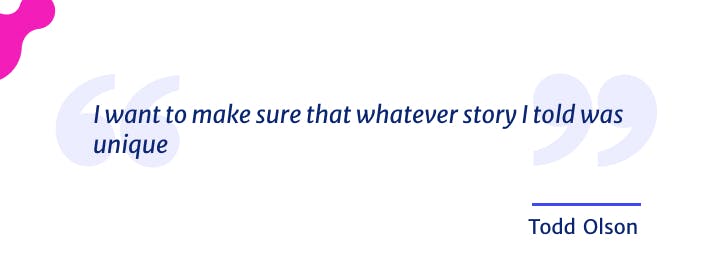
“What is product-led and what is a product-led organization?”
How we define it is a bit unique than the other folks. It’s companies that put product at the center of their overall customer experience. So center to basically everything. It’s not like the product management team leads the company, or it’s just specific to some sort of product-led growth funnel; literally, every department can leverage the product to be better at its role. It’s really more of a mindset shift from companies being more human-led to product-led. And that’s how I kind of characterize it. And I give lots of examples, but we have companies I’ve worked with or met that the finance team uses the product to collect invoices. You know, that’s a product-led business. If they could, of course, dial or email that would be very manual, like find ways to create automation through the product.
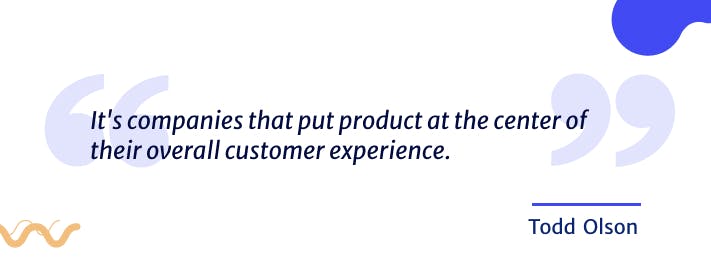
“Where can we go to continue learning about Pendo and check out your book?”
You can go to www.pendo.io it has really great resources and also www.productcraft.com Those are two great ones. For those who are already going into product school, continue to go to Product School as well. Great resources there to develop your career.
Make sure to catch earlier episodes if you haven’t already and stay tuned for more Product goodness coming your way soon!
Listen to our episodes on your favorite platform
Stay tuned for new episodes
By sharing your email, you agree to our Privacy Policy and Terms of Service

